



Alan Sondheim has been ploughing a very singular furrow through art, music, writing, philosophy and much else since the late sixties. On the occasion of his participation in the Children of Prometheus exhibition at Furtherfield Gallery we present here an interview conducted by the artist and writer Michael Szpakowski in which Sondheim gives a broad overview of his artistic formation, practice and philosophy.
Michael Szpakowski: I first came across your work through the Webartery mailing list in 2001. I remember being knocked out by your productivity, a productivity that seemed to be allied to an incredible intellectual curiosity and restlessness, resulting in in words, images, movies, music – I remember once you started making little programs in some variant of Visual Basic… All of these posted day in, day out, come rain or shine, to the list… And, obviously I preferred some to others and for anyone to follow every piece of work you made would mean doing little else with their lives, but the quality, the variety, of what you made was ( and remains) staggering.
I found this compulsion to make work both admirable and invigorating and I’ve followed your work ever since. I think I even once compared you to Picasso on DVblog because I couldn’t think of anyone working in art for the net (and every such description is problematic, I’ll ask something more specific later) who seemed to come anywhere near to that fecundity allied to quality too…
I think of this interview as a general introduction to your work for someone who maybe has only happened across it for the first time in the exhibition at Furtherfield so I’d like to ask, first of all, for you to give us a sketch of your intellectual and artistic formation and the milieu(x) in which you have worked (I mean right from the beginning – tell us what makes you, you!):

Alan Sondheim: Of course this is difficult to answer; I began with writing and around the age of 19, started making music as well, but I was always restless. The compulsion has personal roots, but also a desire to move into an environment, habitus, and explore its limitations and promises; in all of this, I’m concerned with the interplay of the somatic and consciousness on one hand, and abstraction, the inertness of the real, mathesis (the mathematization, structuring of the world) on the other. So there’s this dialog at the limits. My first production was a book of experimental writing, An,ode ; around the same time I made three recordings, two for ESP-Disk; this was around the late 60s. Clark Coolidge, the poet, was very important to me early on; I met him at Brown; he introduced me to Vito Acconci and shortly after, early 70s, I moved to NY, eventually SoHo in its heyday. I’ve never been a traditional artist/writer/musician/etc. but move among these areas; I’m concerned with what for me are fundamental issues of philosophy, body, and the world. I want to explore at the limits of what I’m capable of doing. How is consciousness in relation to the world? How is the world?
I’m driven to create daily; while teaching at UCLA, I made a sound film (16mm for the most part) a week for 37 weeks; they ranged from a minute to an hour in length and were forms of deconstructed narrative. Now online, I try to make a work daily in whatever medium, including virtual worlds of all sorts; I continue to try to push limits – what I call ‘edgespace,’ – the space where gamespaces/worlds begin to break down, and what then? (By ‘gamespace,’ I mean, literally the space of a game, where rules hold – for example chess or football. The rules may be consensual or enforced, etc.) This is deeply involved with the politics and somatics of these spaces of course, and on the political spectrum, I’m leftist and deeply pessimistic; I don’t see internet or social media as salvation of any sort, but as fundamentally neutral, extraordinarily adaptable to any number of usages. I’ve written on the differences at the finest levels between the analog and digital, areas like that usually taken for granted; what emerges is a kind of granularity situated within an obdurate real world whose biosphere is faltering deeply.
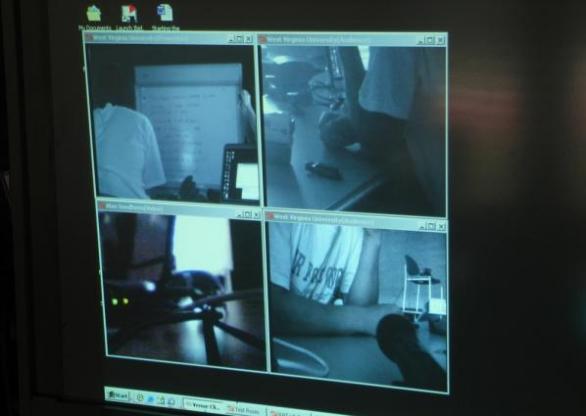
M: Although you are included in an exhibition in a physical space here the vast majority of your output has been presented on the net, usually in the context of one or more mailing lists. Could you say a bit about this. Was this a conscious choice or pragmatism or somehow both? Is there anything you particularly prize about the rhythm of work and presentation that comes with this kind of platform and has the eclipse of many of the old mailing lists with the rise of social media caused problems for you – have you tried to adapt to/utilise these newer modes?
A: It’s pragmatism combined with a desire to explore; edgespace teeters uneasily and tends towards what I call blankspace, where the imaginary exists – for example, the ‘heere bee dragonnes’ in unknown areas of early maps (I haven’t actually seen the expression, but it serves here). I present my work on Facebook and G+; I also used YouTube for a long time until I was banned from it.
M: Banned from it?
A: A long story that would take this too far afield…
I work well in presentation/talk/performance mode online and off. I believe in the depth of email lists of course. I do think my avatar work is really well suited to gallery spaces; I’ve had up to seven projections going at the same time. I’ve also performed live in virtual worlds or mixed-reality situations which are projected/presenced directly, and for a long time Azure Carter, my partner, and I worked with the dancer/performer/choreographer Foofwa d’Imobilite; the physicality of the work was amazing. And another aspect of what I do – what grounds me – is playing musical instruments, mostly difficult (for me) non-western ones; the instruments require tending and close attention. I tend to play fast. Most of them are strings, bowed or plucked; the music is improvisation. Recently I’ve been focusing on the sarangi, for example. And I’ve had something like 17 tapes, lps, and cds issued; the most recent is LIMIT, which was done in collaboration with Azure and Luke Damrosch, who did Supercollider programming based on concepts I’ve had about time reversal in real time – an impossibility in gamespace, but the edgespace is fascinating. The music products excite me; they’re out there in a way that my other work isn’t.
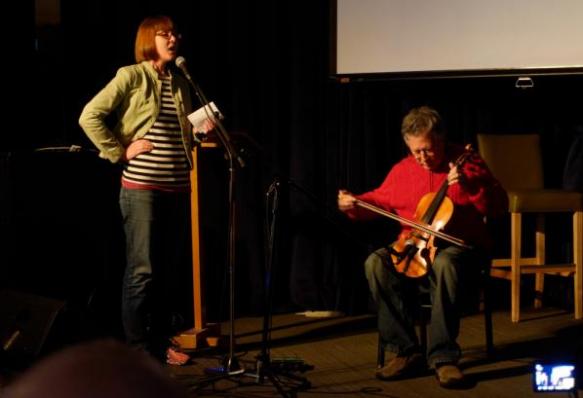
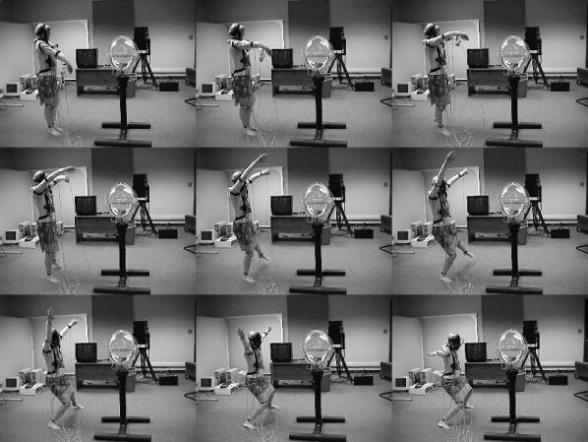
M: I remember when I first discovered internet art or whatever we want to call it (and there have been numerous quasi theological arguments about this) that there was an intense debate about whether the internet was a conduit or a medium – so many artist-scripters/programmer tended to rather look down on those who simply took advantage of the network’s distribution and dialogical properties (although I have to say that my view is that it was in this massive extension of connectivity that the real force of the thing resided – I remember being told in 2001 that moving image was not internet idiomatic which is amusing given the rise of YouTube &c.) Your work, certainly of the last 17 years or so, strikes me as being intimately tied up with the network and with the unfolding possibilities of new media but not necessarily in the sense that you work with the network itself to make objects, works and more in the second sense of the conduit…
A: It depends; for example one of the projects I initiated through the trAce online writing community in 1999-2000 – over the hinge of the millennium in other words – was asking a world-wide group of artists, IT folk, etc., to map traceroute paths and times from the night of 12/31 to the afternoon of 1/1; the internet was supposed to run into difficulties – over timing etc. – and I wanted to create a picture of what was happening world-wide. A second project somewhat later was using the linux-based multi-conferencing Access Grid system to send sounds/images/&c. from one computer to another in the Virtual Environments Lab at West Virginia University – but these images would travel through notes, much like the old bang!paths, around the entire world. So, for example, Azure would turn her head in what seemed like a typical feedback situation – the camera aimed at a screen, she’s in front of it, the result’s projected on the screen, &c. – but each layer of the feedback had independently circled the globe (through Queensland to be specific), creating time lags that also showed the ‘health’ of the circuit, much like traceroute itself. It was exciting to watch the results, which were videoed, put up online with texts &c.
Part of the difficulty I have is being deeply unaffiliated; I need others to give me access to technology. For example, I’ve used motion capture in three different places, thanks to Frances van Scoy and Sandy Baldwin at WVU; Patrick Lichty at Columbia College, Chicago; and Mark Skwarek at NYU. I also did some augmented reality with Mark, and with Will Pappenheimer. To paraphrase, I’m dependent on the kindness of others; I have no lab or academic community to work among in Providence; what I do is on my own. John Cayley gave me access to the Cave at Brown; Eyebeam in NY (I had a residency there) gave me space and equipment to work with, and in both places I was able to create mixed reality (virtual world/real bodies) pieces – those also bounced through the network…
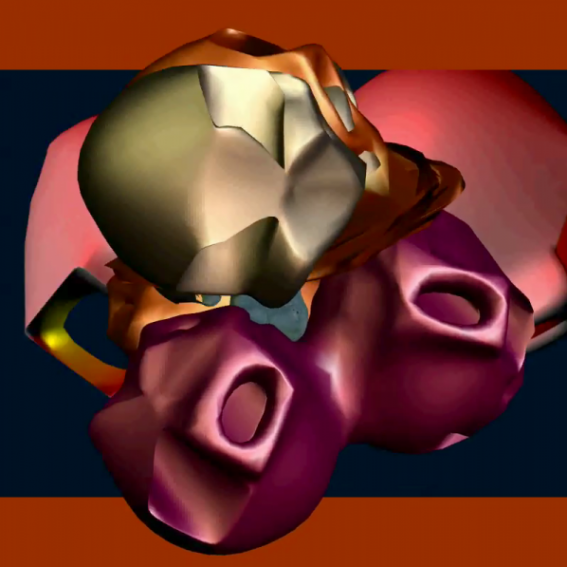
M: Could you talk, then, a bit about the motion capture/avatar work that seems to have been central to what you are doing over the last ten years or so. I also don’t think I’m mistaken in detecting a very decided move back to music making of late (I know this has always been there but it feels foregrounded again)
A: The mocap work has been ‘deep’ for me; it involves distorting the entire process, in other words distorting the somatic world we live in. There are numerous ways to do this; the most sophisticated was through Gary Manes at WVU, who literally rewrote the mocap software for the unit they had. I wanted to create ‘behavioral filters’ that would operate similarly to, say, Photoshop filters; in other words, a performer’s movement would be encoded in a mocap file – but the encoding itself during the movement itself, would be mathematically altered. Everything was done at the command line (which I’m comfortable with). The results were/are fantastic. A second way to alter mocap is by physically altering the mapping – placing the head node for example on a foot. But I worked more complexly, distributing, for example, the nodes for a single performer among four performers who had to act together, creating a ‘hive creature.’ All of this is more complicated than it might sound, but the results took me somewhere entirely new, new images of what it means to inhabit or be a body, what it means to be an organism, identified as an organism. This is fundamental. I’m interested in the ‘alien’ which isn’t such of course, which is blankspace. (The alien is always defined within edgespaces and projections; we project into the unknown and return with a name and our fears and desires.)

Most of what I do, for me all of what I do, is grounded in philosophy – ranging from phenomenology to current philosophy of mathematics to my own writing. So these explorations are also artefactual; I think philosophy is far too grounded in writing as gamespace; writing for me, when it’s touched by the abject, the tawdry, the sleazy, the inconceivable, opens itself up.
As far as music goes, I touched on it above in regard to LIMIT. One thing that concerns me is speed, playing as fast as possible, so that the body and mind move on de/rails that are at my limits; I think of this as shape-riding and the results and internal time dilations involved keep me alive…

M: You are genre/practice/technique promiscuous and you have a high level of skill in all –you could equally (and have been) styled Alan Sondheim ‘writer’ , Alan Sondheim ‘musician’, Alan Sondheim ‘maker of moving image work’ (with a marvellous sub-category ‘Alan Sondheim ‘maker of dance related video works’, for a while). Is one of these, in your heart of hearts, central, and, whether this is so or not, how do you place yourself in respect to the various traditions around these areas of work. How do you fit into the art world, into literature or the experimental film tradition? How do you relate to net art/networked art/new media &c.?
A: I don’t seem to fit into the artworld, net art, poetry world, music world &c. – it’s difficult for me to get my work around as a result. Nothing is central but a desire to see how systems form, coagulate, degenerate, collapse, become abject, &c. in relation to consciousness: How are we in the world? On a concrete level, finance enters into the picture; what can I do given a kind of lack of community around me? How can I push myself?
I’m not sure what ‘net art’ is, but certainly the Access Grid pieces &c. are of that, although not of Web-based protocols. There are so many ports out there to use! I do think of myself as a new media artist or someone burrowing into post-media. I’ve always had a few people who believe in what I do, who have helped or worked with me, and I’m really grateful for that. But in terms of institutions, I feel like an outsider artist and am treated like one. It came to a head for me years ago one day when I was living in Soho; I had a call from Vito who said he had realized that whatever I am, I’m not an artist; the same day Laurie Anderson spoke to me and said she realized that whatever I am, I am an artist. So my identity has been far more fluid than I’ve been comfortable with, and it’s affected my career. (There was that tape Kathy Acker and I made 1974, and I read an interview a few years ago, forget the source, with Edit Deak who said the tape wasn’t art at all; in the meantime, it continues to be shown at various venues.)
M: Finally, could you say a little about the work in this particular show?
A: The work in the show is a group of 3d-printed avatars distorted through the mocap process described above. For me they connect, deeply, with charred bodies, with anguish, with genocide and scorched earth. They appear also in number recent videos created in various virtual worlds, moving/performing etc. The anguish, so close to death and unutterable pain, is there. I’ve talked about the kinds of brutal killings occurring now worldwide, from Finsbury Park to the United States, the rise, not only of racisms, but violent nationalisms, in the U.S. certainly encouraged by the present regime. I’m sick of it. We all have nightmares. I want to understand this, this grounding in the blooded earth that shakes our very ability to speak, to think, to act.
And yet of course we must resist.

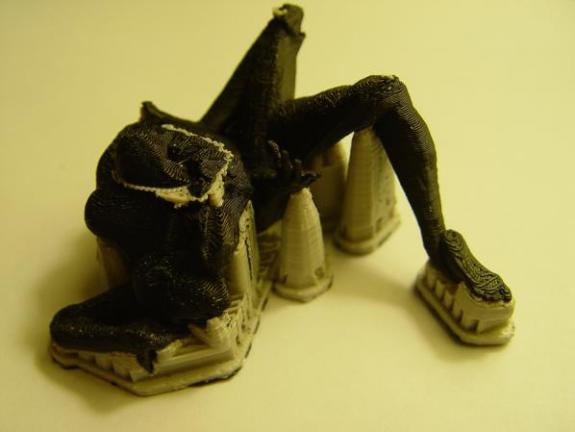
The work in the show is also critical, then, of technophilia, technological answers to the world, utopian dreaming. The top one percent benefit most from the results. I see utopian thinking as dangerous here. Our so-called president has his finger on 4000-5000 nuclear warheads. That’s the reality for me, and why I don’t sleep at night.

Michael Szpakowski: 聽琴圖 (listening to [Alan Sondheim playing] the qin), after Zhao Ji
// gravure, urushi lacquer & pigment on found wood // 30.5X7.5″
Opening Event: Saturday 13 October 2012, 1-4pm
co-hosted with The Festival of Mint – A Celebration of Local Growing – serving mint tea and mojito
Contact: info@furtherfield.org
DOWNLOAD PRESS RELEASE FOR PRINT HERE
+ See images of the exhibition on Flickr.
To be alive is to be wild. And we humans have a will that shapes the world with language, song, lust, labour and play. And for those of us who connect with it, a network of machines now extends our reach, amplifies our urges and quickens our exchanges.
The artists in this exhibition work and play with living organisms and technical things, systems and language, to explore how our relation to the natural world is changing. They introduce us to the unruly life going on in other natural webs of communication, knowledge and feral exchange. Gallery visitors (humans and dogs) are invited to view videos, interact with art installations and social media and undertake walks in the surrounding park with its other animals and edible plants.
Mary Flanagan travels overland and undersea in virtual worlds. Her journeys in the worlds are caught on video. Her avatar scouts the boundary lines of ‘heritage’ landscapes built by “residents”. Her walks are inspired by Thoreau, the great American writer and walker, who knew that ‘all good things are wild and free’.
![Aquitaine from the [borders] series by Mary Flanagan](http://www.furtherfield.org/wp-content/uploads/2012/08/borders-acquitaine-web.jpg)
Andy Deck calls attention to echoes of the wild in language. Despite the many entertaining digital visions of nature beamed to the flat screen, a wealth of intuitions relating to nature still survive in colorful expressions passed down for centuries. He invites you to help him build a bestiary of animal idioms using social media and a gallery installation.*
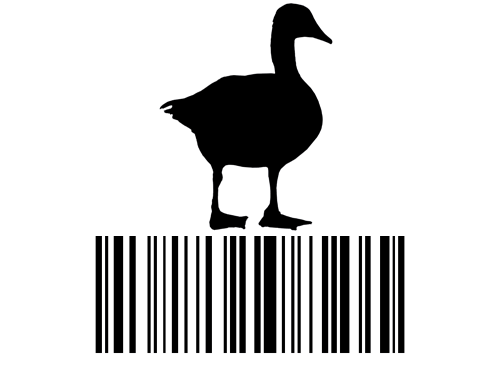
Sarah Waterson has invented a set of cartographic tools for dogs (and their human friends) to develop an interspecies psychogeography. Her electronic mapping system generates sniff data, routes and photographic journals supporting communication, collaboration and knowledge-sharing between companion species.
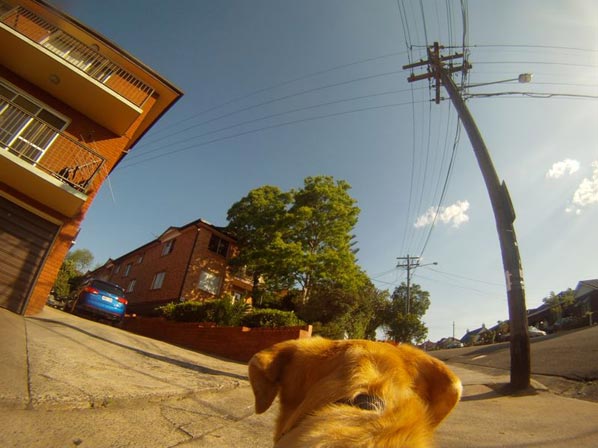
Helen Varley Jamieson and Paula Crutchlow dramatise the private actions and global consequences of our domestic lives in a long-running series of networked performances located in peoples’ homes. Dave’s Quiz (part 2) is an interactive extension of their provocation to discuss and appreciate relationships between personal, state and corporate responsibility around issues of consumption and disposal in late-capitalism.
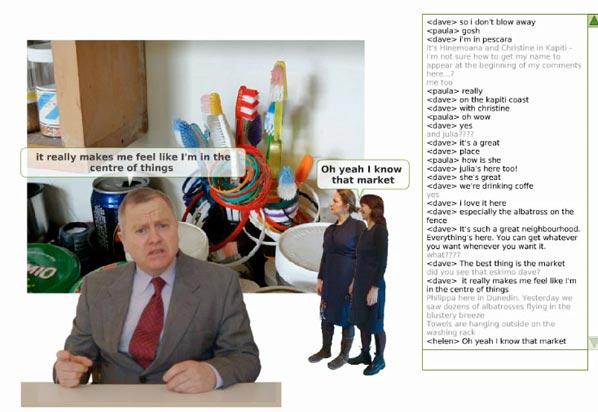
Artists duo Genetic Moo invite us to discover a dark, interactive sea of wiggling, luminescent creatures that gorge on torch light. They fantasize an evolutionary digression through the lens of human sensuality, drawing on images made by early scientists as they first found micro organisms or Animacules swarming in every sea, pond and pool of saliva.
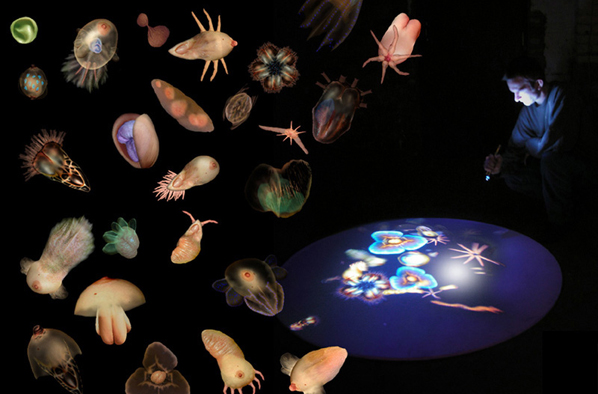
Disquieted by the environmental impact of constant technological upgrades, Dominic Smith works with open knowledge from the DIY mycology movement to create a system that combines the waste products from the tools and fuels of the contemporary coder. Out-of-date software manuals and coffee grounds are shredded to create a compost for fruiting oyster mushrooms to be harvested and consumed by visitors.**
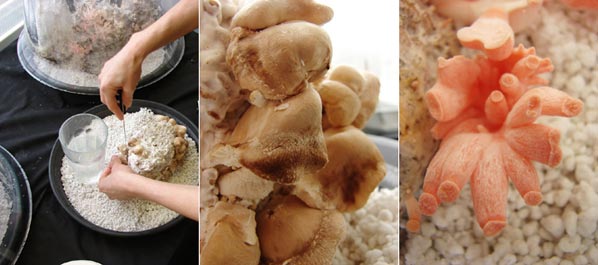
This exhibition is dedicated to Jay Griffiths, author of WILD: An Elemental Journey (2006).
* Crow_sourcing is a 2012 Commission of New Radio and Performing Arts, Inc. for its Turbulence website. It was made possible with funding from the Jerome Foundation. http://Turbulence.org/Works/crow_sourcing
** Dominic Smith developed this iteration of the shredder concept, originated by Julian Priest, David Merritt & Adam Hyde, as part of the geekosystem project. It is an experimental transposition of software development methods taking an organic, material form. It’s also worth noting that in his 1998 net art work Shredder 1.0 Mark Napier took the texts and images from pages of the WWW and jumbled them in colourful abstractions to reveal their ‘rawness’ once freed from the strict orthodoxies of web page design.
Crow_sourcing by Andy Deck
[borders] by Mary Flanagan
Animacules by Genetic Moo
make-shift: Dave’s quiz (part 2) by Helen Varley Jamieson & Paula Crutchlow
Shredder by Dominic Smith
Laika’s Dérive – The dogs de Tour by Sarah Waterson
Paula Crutchlow
Paula Crutchlow is a performance maker and director who co-authors live events across a variety of forms. As a co-founder and director of Blind Ditch she combines digital media and performance to engage audience and participants in distinct and active ways. Her work often uses a mix of score/script, improvisation and structured interaction to focus on boundaries between the public-private, and issues surrounding the construction of identity and the politics of place. Paula is currently the Creative Advisor for Adverse Camber directing work with some of the UK’s leading storytellers, she was an Associate Lecturer in Theatre at Dartington College of Arts, Devon 2001-10, and teaches Digital Performance Practice at the University of Plymouth.
Andy Deck
Andy Deck specializes in collaborative processes and electronic media. As a Net artist and software culture jammer, Deck combines code, text, and image, demonstrating patterns of participation and control that distinguish online presence and representation from previous artistic practices. In addition to numerous online exhibitions, his work has appeared in exhibitions like net_condition (ZKM), Unleashed Devices (Watermans Art Centre), and Animations (PS1-MoMA). He is also a co-founder of Transnational Temps, a media arts collective concerned with making Earth Art for the 21st Century.TM After showing in EcoMedia, a ground-breaking series of european exhibitions, Transnational Temps mounted the 2010 oil-related exhibition Spill>>Forward in New York. In 2011 Deck received first prize in the interactive division of the LÚMEN_EX Digital Art Awards. Deck’s work, currently shown by the Whitney Museum of American Art’s Artport and the Tate Online, has been commissioned by these and other prestigious institutions. Deck lives and works in New York City.
Mary Flanagan
Mary Flanagan is an artist focused on how people create and use technology. Her collection of over 20 major works range from game-inspired systems to computer viruses, embodied interfaces to interactive texts; these works are exhibited internationally at venues including the Laboral Art Center, The Whitney Museum of American Art, SIGGRAPH, Beall Center, The Banff Centre, The Moving Image Center, Steirischer Herbst, Ars Electronica, Artist’s Space, The Guggenheim Museum New York, Incheon Digital Arts Festival South Korea, Writing Machine Collective Hong Kong, Maryland Institute College of Art, and venues in Brazil, France, UK, Canada, Taiwan, New Zealand, and Australia. Her three books in English include Critical Play (2009) with MIT Press. Flanagan founded the Tiltfactor game research laboratory in 2003, where researchers create game interventions for social change.
Genetic Moo
Genetic Moo build living installations in pixels and light. The duo have been creating interactive art since 2008. Virtual creatures are constructed from choreographed video clips, combining elements of the human and the animal. They respond in a variety of life-like ways to audience motion, sound and touch and vary in size from the tiny Animacules to the all encompassing Mother. The works are driven using Open Source and Flash Software utilizing a variety of interactive interfaces. The programming behind the work is just complex enough to make the creatures appear more believable and create rich user driven narratives.
Schauerman and Pickup both gained Masters degrees from the Lansdown Centre of Electronic Arts. Their work has been exhibited extensively including the De La Warr Pavilion (2010); Watermans (2010) The Wellcome Collection (2011) and Glastonbury (2011). One of their works, Starfish, received a John Lansdown Award for Interactive Digital Art at Eurographics (2007) and was nominated for an Erotic Award (2012).
Helen Varley Jamieson
Helen Varley Jamieson is a writer, theatre practitioner and digital artist from New Zealand. In 2008 she completed a Master of Arts (research) at Queensland University of Technology (Australia) investigating her practice of cyberformance – live performance on the internet – which she has been developing for over a decade. She is a founding member of the globally-dispersed cyberformance troupe Avatar Body Collision, and the project manager of UpStage, an open source web-based platform for cyberformance. Using UpStage, she has co-curated online festivals involving artists and audiences around the world. Helen is also the “web queen” of the Magdalena Project, an international network of women in contemporary theatre.
Dominic Smith
Dominic Smith is an artist who engages with project hierarchy, ownership of ideas and heuristic curatorial strategies. Dominic is a founding member of ptechnic.org. He has exhibited and performed at Govett-Brewster Art Gallery in New Zealand, at the ICA in London, CCA Glasgow, AV Festival, Newcastle and Eyebeam NY. He has a doctorate with CRUMB at Sunderland University that examines the relationship between open source production methods, and art/curating methods. Dominic is also the current curator of thepixelpalace.org through which he also developed and runs basic.fm
Sarah Waterson
Sarah Waterson has practised as a new media artist for the past twenty years. Her works include electronic installations, collaborations with performers, video and audio work, generative and software based artworks, VR environments and data visualisations and ecologies. Interdisciplinary and collaborative practice informs the development and ultimately the design of these artworks. Her current interests include data mapping, data ecologies and cross species collaboration.
Sarah’s recent interactive installations have included: Laika’s Dérive (Performance Space, Carriageworks 2011), 33ºSouth (collaboration with Juan Francisco Salazar, Casula Powerhouse 2009), a custom made data mapping system that juxtaposes the cities of Sydney (Australia) and Santiago (Chile) trope, a e-literature project developed for the Second Life environment (SWF 08, ongoing), subscapePROOF (collaboration with Kate Richards, Australian Centre for the Moving Image, Melbourne), and subscapeBALTIC (ISEA2004, Helsinki, Finland). Sarah is a senior lecturer in interactive media at the School of Humanities and Communication Arts, University of Western Sydney, Australia.
Furtherfield Gallery
McKenzie Pavilion, Finsbury Park
London N4 2NQ
T: +44 (0)20 8802 2827
E: info@furtherfield.org
Furtherfield Gallery is supported by Haringey Council and Arts Council England